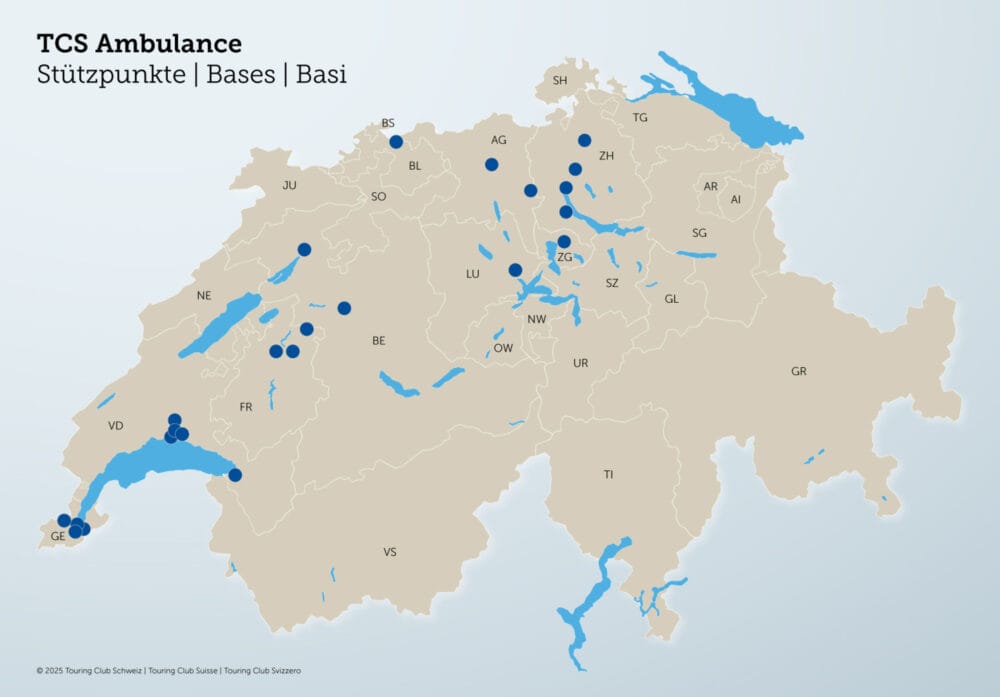Hazardous substances: The pitfalls of furfuryl alcohol
The Major Accidents Ordinance regulates the protection of the population and the environment against serious damage caused by major accidents that can occur in plants, on transport routes or on pipelines. Establishments are affected by the Major Accidents Ordinance if certain quantity thresholds for substances, preparations or hazardous waste are exceeded. Determining these quantity thresholds is not always easy.

On 01.04.1991, the Ordinance on Protection against Major Accidents, abbreviated to Major Accidents Ordinance (StFV), came into force. The purpose of the ordinance is to protect the population and the environment from serious damage caused by incidents. With the revision of the StFV on 01.06.2015, nothing has changed in the purpose, but very much the provisions have changed, which companies are affected by the StFV: With the adaptation to the Globally Harmonized System of Classification and Labeling of Chemicals (GHS), many things became clearer. However, one should be prepared for some pitfalls, as the following two examples show. In the following, we will focus on companies that handle chemical substances.
Determine quantity thresholds
If the maximum storage quantity of a hazardous substance or a hazardous waste is above the quantity threshold according to the StFV, the company is obliged to prepare a brief report for the attention of the authorities. If necessary, risk-reducing measures of a structural or technical nature may subsequently be required. Companies have an interest in remaining below the quantity threshold in order to save themselves this additional expense and, at the same time, to minimize the risk from an incident by using smaller quantities of hazardous substances at the site. The population also has the same interest.
Quantity thresholds are determined in different ways: For a selection of substances and mixtures, the quantity thresholds (MS) are given in Annex 1.1 of the StFV. Explicitly mentioned are everyday products such as gasoline (MS: 200 t), diesel (MS: 500 t) or the welding gas acetylene (MS: 5 t), but also particularly hazardous industrial chemicals such as chlorine gas (MS: 200 kg). For hazardous waste, Annex 3 of the Uvek Ordinance on Lists for the Movement of Waste lists the quantity thresholds by LVA code.
For substances and preparations, which are not listed, the quantity threshold is derived from the substance properties. Here, the revision of the StFV of 2015 has changed a few things: Originally, various criteria from different classification systems were used. Thus, for fire and explosion properties, the fire hazard level according to SI (F1-F4, O1-O3, etc.), the European chemical law classification (E, F+, F, O, R10) and the flash point (above or below 50 °C) were considered, among others. In the revised "New" regulation, the classification of a substance or mixture according to the EU CLP regulation is decisive. This is expressed in the assigned H-phrases and EUH-phrases. The corresponding criteria can also be found in Annex 1.1 of the StFV. This simplifies the determination of the quantity thresholds, since companies with large quantities of hazardous substances usually already have hazardous substance storage concepts and substance lists in which the H-phrases and EUH-phrases are recorded.
A special regulation concerns highly active substances that can have a harmful effect on humans in very small doses. The decisive criteria are particularly low occupational exposure limits and effect doses. In addition to highly carcinogenic substances, active pharmaceutical ingredients may also be affected. The quantity threshold for highly active substances is correspondingly low, at 20 kg.
As an aid to determining the quantity threshold, the Bafu has developed a Manual on the Hazardous Incident Ordinance has been published. This implementation guide contains a list of quantity thresholds according to the Major Accidents Ordinance for frequently used substances. In addition, the Bafu provides a quantity threshold calculator in Excel format on its website, which indicates the correct quantity threshold based on the H-phrases of a product. Where are the potential problems?
Example furfuryl alcohol
Let's look at furfuryl alcohol as an example. The substance is used in the production of furan resins. It is not highly active and is not listed by name in the StFV. The quantity threshold is therefore assigned via the CLP classification. According to the "List of Harmonized Classification and Labelling of Dangerous Substances" (Annex VI of the EU CLP Regulation), furfuryl alcohol is assigned, among other things, to the hazard statement H331 "Toxic by inhalation". This results in the quantity threshold of 2000 kg. The same value can be found in the manual on the Ordinance on Major Accidents of the Bafu.
Contradictions may occurif you refer to another source of information, for example, the safety data sheet, supports. Some manufacturers classify furfuryl alcohol more strictly: Based on animal tests, which showed an LC50 value (rat, inhalation, 4 h) of 0.9 mg/L, the substance is classified as H330 "Danger to life by inhalation." This classification is also found in the GESTIS substance database of the Institute for Occupational Safety and Health of the German Social Accident Insurance IFA and in various registration dossiers for furfuryl alcohol at the European Chemicals Agency (ECHA).
This means that the quantity threshold, which is determined on the basis of the information in the safety data sheet, may not correspond to the enforcement aid of the Bafu. In the case of furfuryl alcohol, this is due to a stricter assessment by some manufacturers. However, it is also conceivable that there is an error in a safety data sheet. It may therefore be worthwhile to do a little more research when determining quantity thresholds on a case-by-case basis, and in particular to consult the Bafu's enforcement guide. Perhaps a higher quantity threshold results for a product than the information in the safety data sheet would suggest.
Example sodium chloride
As a second example, a cleaning product is considered which contains sodium chlorite. Sodium chlorite reacts with acids to form chlorine dioxide, a gas that is very harmful to the lungs. Numerous ECHA registrants classify the substance as EUH032 "Contact with acids liberates very toxic gas." The substance is listed in the Bafu enforcement guidance, with a quantity threshold of 200 kg.
For pure sodium chlorite this quantity threshold makes sense. But what if only a few percent of the substance is contained in a mixture? Such products are often also classified with EUH032, which means that their quantity threshold is also 200 kg - based on the entire product! There is a problem here, not in the Major Accidents Ordinance, but in the European CLP Regulation. For most classification criteria, it is regulated how to proceed with mixtures, i.e. diluted substances.
But such a dilution principle is missing for the criterion EUH032 "Develops very toxic gases in contact with acid". It is up to manufacturers to decide how to classify their product. Thus, by protecting itself and choosing a cautious classification for its chlorite-containing product, a manufacturer may be causing its clientele to become accidental.
A solution to this unsatisfactory situation is not yet available at the moment, but may be in sight. An inquiry with the Bafu revealed that the inclusion of mixtures containing sodium chlorite in the Bafu's enforcement aid and the definition of a corresponding concentration limit is being examined.
We see: The volume thresholds are not set in stonebut may change if new findings are available. In view of the complexity of chemicals legislation and the variety of hazardous substances, updates and clarifications will always be necessary. It is therefore worthwhile to recheck the quantity thresholds in the company from time to time and to check for changes - even if the hazardous substance inventory has remained unchanged.
Manual on the Hazardous Incident Ordinance
The Manual on the Ordinance on Major Accidents of the Bafu is an enforcement aid with a modular structure. The present "General Section" explains the general duties and tasks of the owners of plants, traffic routes and pipeline facilities as well as those of the federal government and the cantons. At the end of each chapter, it refers to the plant-specific modules if these contain further plant-specific explanations and notes.
This technical article originally appeared in the printed edition SAFETY-PLUS 4-2021.
You want to read the complete technical article in this issue? Then close right now here a subscription.
Source: Neosys









